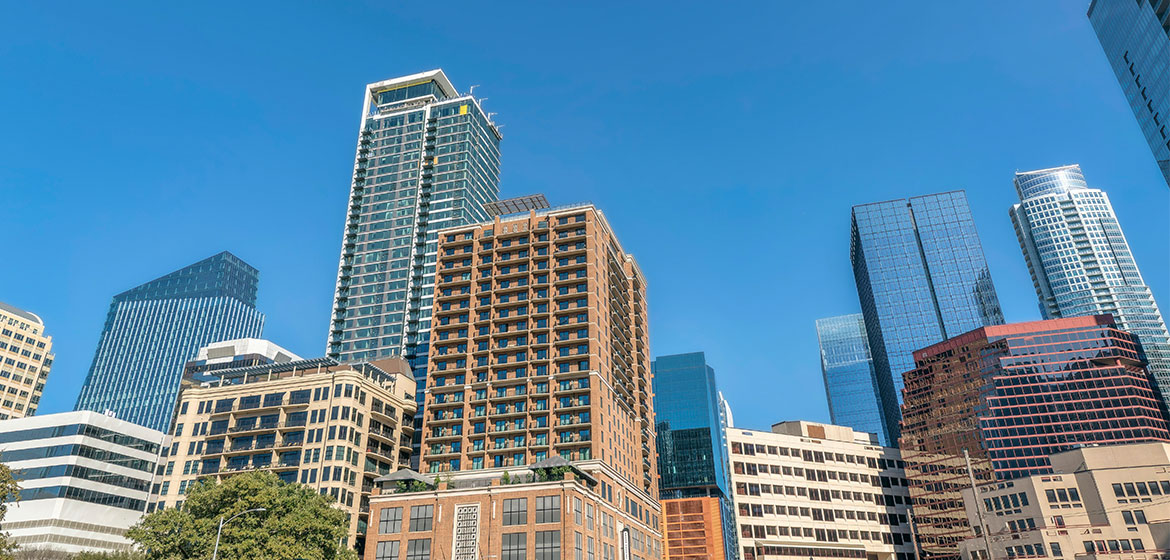13 Popular And Common Types Of Buildings

More and more these days, everywhere you look, there are buildings. It’s hard to find land that is untouched and undeveloped because, every year, more buildings go up. It’s progress. Did you know that even though it seems like there are an unlimited number of building types, there are actually a relatively small number that are used worldwide – at least in a basic sense.
When we say types of buildings, we are not referring to structure types (composite, membrane, shell, frame, etc.), we are not talking about types of building construction (pre-engineered, concrete frame, steel frame, wood frame, etc.), nor are we talking about architecture (postmodern, modern, Victorian, neoclassical, Gothic, etc.).
Check out these 13 common/popular building types/classifications.
Building Types
Office buildings can consist of the following:
- Walk up
- Office towers
Retail buildings include several types:
- Malls
- Big-box
- Services/boutiques/shops
Residential buildings most commonly include the following:
- Condominiums
- Apartments
- Townhouses
- Detached single-family
Hospitality buildings have, thus far, the most including the following:
- Restaurants
- Hostels
- Bed and breakfasts
- Resorts
- Motels
- Hotels
Institutional civic buildings surpass the number of hospitality buildings and include:
- Post offices
- Prisons
- Fire/police
- Court houses
- Museums
- Community centers
- Libraries
- Clinics and hospitals
Multipurpose buildings can include:
- Mall/office space
- Multipurpose skyscraper
Buildings for gatherings include a handful:
- Conference centers
- Auditoriums
- Theaters
- Arenas
- Stadiums
Religious buildings, though there may be more, basically consist of the following:
- Synagogues
- Monastery
- Cathedrals
- Mosques
- Temples
- Churches
Industrial buildings, though there seem to be limitless types, basically boil down to these:
- Nuclear plants
- Water treatment plants
- Power plants
- Storage facilities
- Distribution centers
- Warehouses
- Factory
- Manufacturing plants
Educational buildings consist of the following:
- Technical
- University
- Colleges
- High schools
- Middle
- Elementary
- Preschools
Agricultural buildings only include a few:
- Chicken coops
- Silos
- Greenhouses
- Barns/stables
Transportation buildings for Terminals include:
- Buses
- Trains
- Airports
- Ferry/ship
Recreational buildings house all sorts of fun activities and include the following:
- Indoor trampoline parks
- Public swimming pools
- Ice rinks/roller rinks
- Indoor climbing gyms
- Bowling alleys
- Fitness centers
Now for Some Commonly Asked Questions
Q: When is a building permit required – what size building?
A: Depending on where you live, buildings may or may not require a permit regardless of size. Strict requirements are usually in place in areas that are more densely populated.
Q: Why are so many buildings abandoned?
A: A business or family has to move, a different location may be more cost-effective, too many repairs are needed, and the list goes on and on. The owner’s asking price may be too high and so new occupants can’t afford to move in. Then again, the building or location may be obsolete. Example: No building permits are needed in Missouri, but in Florida, any time a structure is being altered or erected, owners and contractors must obtain a building permit.
Q: What is the average weight of a building?
A: Tiny homes and other small buildings can weigh under 10,000 pounds. The world’s largest building weighs in at an astounding 1.5 billion pounds plus.
No Matter What Type of Commercial Building You Have, We Can Help with Your Insurance Claim
When you need help with your insurance claim, regardless of your commercial building’s classification, contact the trustworthy professionals at Stone Claims Group. Why? To help your company get back up and running, we stand ready 24/7, each and every day.